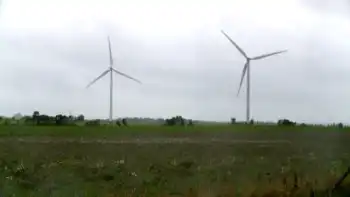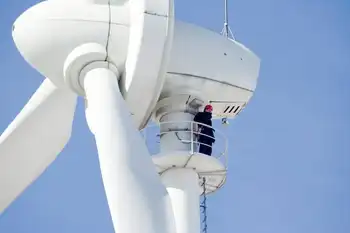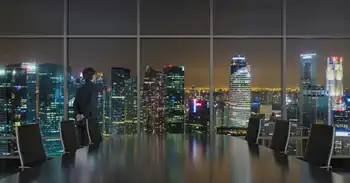Audit finds vulnerability of EnergyStar program
WASHINGTON, D.C. - Does a “gasolinepowered alarm clock” qualify for the EnergyStar label, the government stamp of approval for an energysaving product?
Like more than a dozen other bogus products submitted for approval since last June by Congressional auditors posing as companies, it easily secured the label, according to a Congressional report.
So did an “air purifier” that was essentially an electric space heater with a feather duster pasted on top, the Government Accountability Office said.
In a ninemonth study, four fictitious companies invented by the accountability office also sought EnergyStar status for some conventional devices like dehumidifiers and heat pump models that existed only on paper. The fake companies submitted data indicating that the models consumed 20 percent less energy than even the most efficient ones on the market. Yet those applications were mostly approved without a challenge or even questions, the report said.
Auditors concluded that the EnergyStar program was highly vulnerable to fraud. Maria Vargas, an official with the Environmental Protection Agency, which runs the program with the Energy Department, said the approvals did not pose a problem for consumers because the products never existed. There was “no fraud,” Ms. Vargas emphasized. She said she doubted that many of the 40,000 genuine products with EnergyStar status had been mislabeled.
But in anticipation of the reportÂ’s release, the Energy Department has issued two statements in recent days pledging to strengthen the program.
Yet auditors found problems beyond the approval of nonexistent products. They determined that once a company registered as an EnergyStar partner, it could download the logo from the governmentÂ’s Web site and paste it on products for which it had not even requested approval.
The report is only the latest in a series involving the 18yearold EnergyStar program, which was set up to guide the public on energyefficient choices that could both save people money and help reduce the nationÂ’s runaway energy consumption.
Watchdogs within the Environment Protection Agency and the Department of Energy have reported in the past that Energy Star has taken some claims of energy efficiency on faith. Yet the new study suggests that it often does so on remote control.
Congressional auditors said they were told by EnergyStar officials that some of the approvals, including the one for the gasoline alarm clock, had been issued by an automated system and that the details had probably never been reviewed by a human being.
Ms. Vargas added that the automated system that greenlighted the clock was only a preliminary “screen” to evaluate energy figures submitted by manufacturers and to cut out products that did not qualify. Every product that is certified is reviewed by a human being, she said.
But Senator Susan Collins, Republican of Maine, who requested the accountability office study, said in an interview, “I don’t think I’d admit that.”
If a government employee or contractor examined the comical picture submitted of the space heater with a feather duster, or read the description of the gaspowered clock — with dimensions suggesting it was the size of an electric generator — “and red flags didn’t get raised, that’s a really troubling commentary,” Ms. Collins said.
She said the ease with which the auditors had fooled the program suggested that consumers and agencies that rely on the logo were paying extra for products that might not actually save energy. “This program is extraordinarily easy to defraud,” she said.
Ms. Collins also noted that the economic stimulus bill included hundreds of millions of dollars in tax breaks for people who buy EnergyStar products and that many government agencies were required to choose EnergyStar products if they were available.
In effect, people “are ripped off twice,” as consumers and as taxpayers, she said.
Previous reports have suggested that the EnergyStar label is not always a complete or useful guide to the best consumer choices. Last October, for example, the inspector general of the EPA said that 100 percent of the computer monitors that carried the EnergyStar logo had indeed met requirements. But so did 80 percent of the monitors that did not have the logo the manufacturers had apparently not sought approval. For computer printers, 95 percent of the ones with the logo qualified, but so did 60 percent of the ones that did not have the logo.
And some consumer products lacking EnergyStar approval consumed less energy than those that had it, the audit found.
And the inspector general of the Energy Department reported the same month that EnergyStar claims were not “accurate or verifiable” for many products. The program requires manufacturers of windows and fluorescent lights to get their products certified by independent laboratories. But companies that make refrigerators, washing machines, dishwashers, water heaters and room airconditioners, in which efficiency is far more critical because they gobble more energy, need only check a box on a form to be certified.
The Energy Department has promised to set up a system of independent verification for all products. It said it would begin testing refrigerators, freezers, clothes washers, dishwashers, water heaters and room airconditioners. In October 2008, Consumer Reports magazine reported it had tested refrigerators built by LG of South Korea and found that they were not nearly as efficient as the maker claimed. LG eventually agreed to modify the machines already sold to reduce electricity consumption and to reimburse customers. The Energy Department said it had found a Samsung refrigerator that did not comply.
The Energy Department does spot check some items with the EnergyStar logo, but mostly the ones that do not use much power in the first place. The department recently announced that several models of compact fluorescent lamps would have to remove the EnergyStar logo because they were not durable enough. It has conducted spot checks on regulated appliances that do not carry the logo and determined that some cannot be legally sold because they do not meet minimum efficiency standards.
The audit did not set out to test any products but focused solely on testing the certification process by submitting bogus products.
Gene Rodrigues, the director of customer energy efficiency at Southern California Edison, suggested that the EnergyStar label suffered from its appeal to manufacturers. “It may be that their ability to properly manage the brand suffered at the fringes,” he said of the program’s overseers.
He argues that a strong federal certification program is vital. “What we in the program industry are looking for is for this to be a wakeup call to whip them into shape,” he said.
In another sign that Energy Star is not dotting its iÂ’s, program officials told the auditors that they sought to assure honesty by warning corporate applicants on some of its paperwork that intentionally submitting false information is a crime, under Title 18 of the United States Code.
But it is a crime under Title 19, not 18, and the warning does not appear on all of the relevant forms, the report said.
Related News

Wind generates more than half of Summerside's electricity in May
SUMMERSIDE - During the month of May, 61 per cent of the electricity Summerside's homes, businesses and industries used came from wind power.
25 per cent was purchased from the West Cape Wind Farm in West Point, P.E.I. — the city has had a contract with it since 2007. The other 36 per cent came from the city's own wind farm, which was built in 2009.
"One of the strategic goals that was planned for by the city back in 2005 was to try to become a 100 per cent green city," said Greg Gaudet, Summerside's director of municipal services.
"The city started…




